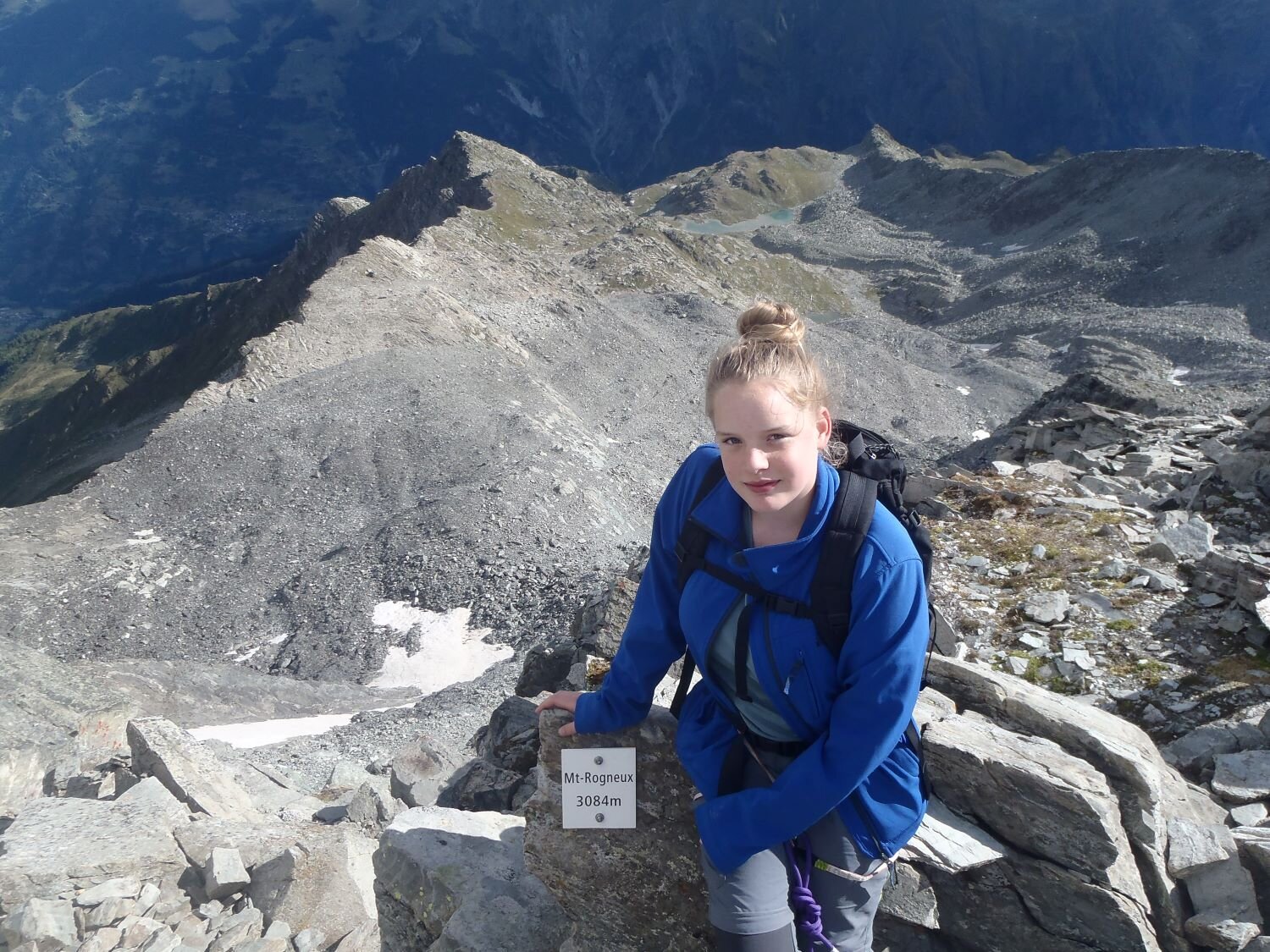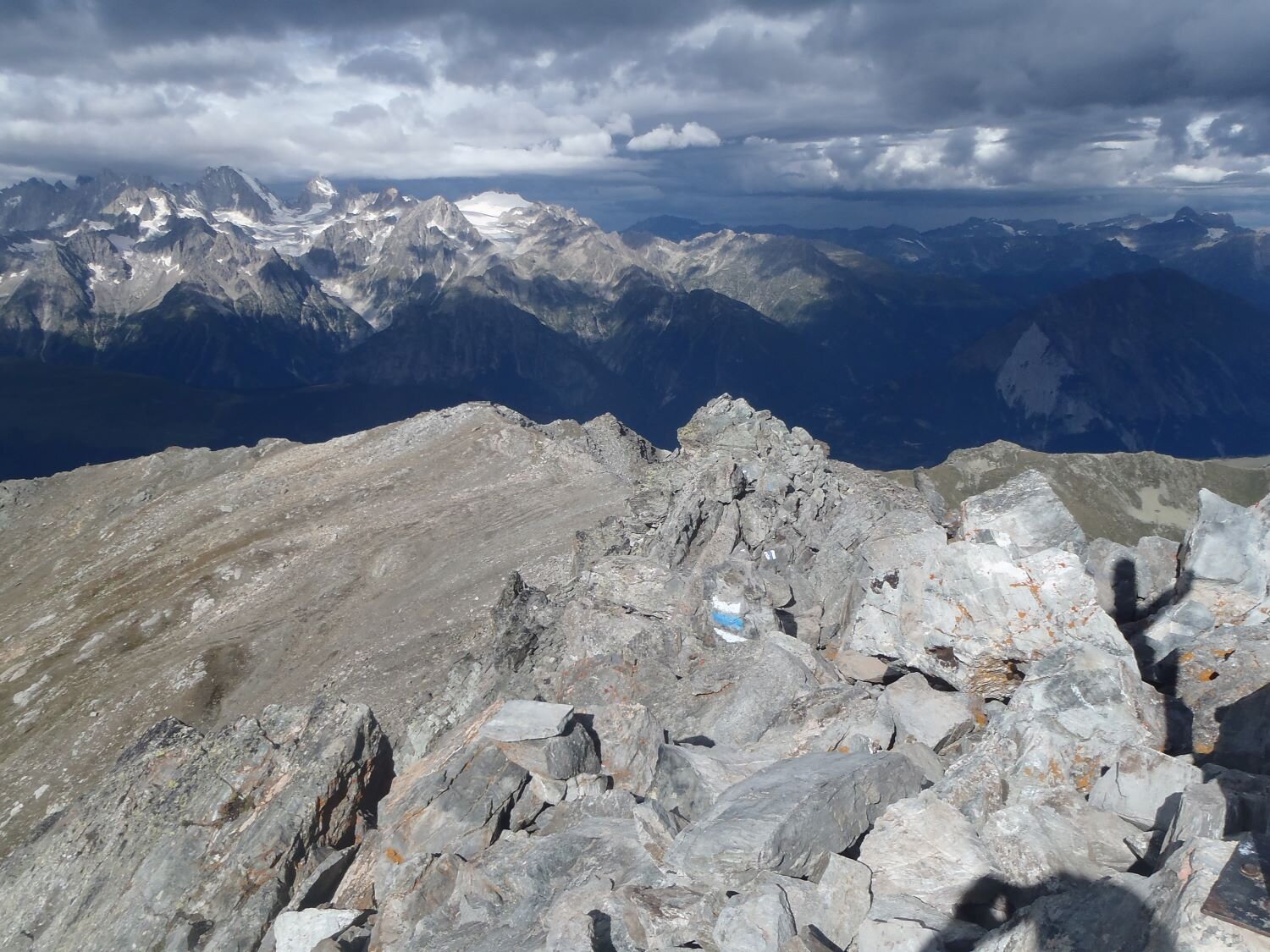A Family Alpine Adventure
/GUEST POST by PETER LOVATT
We first met Peter Lovatt in September 2019 when he booked on our Scrambling Masterclass and Movement Masterclass. He was one of our first mentees in January 2020 when we launched Chris Ensoll Mountain Mentor.
In October 2019 I was walking off the top of snow-capped Scafell with my daughter Annabelle, aged 11 at that time. We were feeling elated at having climbed England’s ten highest mountains over the preceding year. What to choose as the next challenge? We were still discussing this in Spring 2020, after our plans to climb Ben Nevis and Snowdon were scuppered by the pandemic. How about something a bit bigger?
On the summit of Mt Rogneux
I had always had a vague plan to get to the Alps in summer 2020, but could we find somewhere to go that didn’t involve quarantine? By August, Switzerland had opened up their borders and the UK had added them to the ‘not-banned’ list.
I’m fortunate to have a Swiss friend who lives in Montreux, so that has been my starting point for trips to the Alps for many years (fly to Geneva, then 2 hours on a train from the airport), so I started looking for somewhere not too far from Montreux that we could reach by public transport. On a previous trip I had spent a couple of days at the Hospice du Grand St-Bernard, which is easily reached by a series of trains and a bus. The hospice was founded in 1050 to provide simple hostel accommodation for travellers, at 2469m on a famous ancient road pass between Switzerland and Italy. Dog lovers will recognise this as the home of the St Bernard, which was created at the hospice in the 1670s. These dogs were originally bred as guard dogs for the hospice (they are massive), before they started to be trained for their more famous role in mountain rescue.
I was keen to re-visit this place which I remembered as being full of friendly people of every nationality. We caught the ‘early’ bus which arrives at the hospice at lunchtime, giving us time for an afternoon walk to get used to the gloriously dry air. We climbed to the Col Ouest de Barasson at 2635m; Annabelle enjoyed the views into Italy, while I made a short reconnaisance along the east ridge of the unappealingly-named Mont Mort; a few hundred metres was enough to see that its disintegrating towers were not going to be a suitable warm-up route for us.
Ladders on the ascent of Grande Chenalette
The sun streaming in through the tiny windows of the mediaeval hospice bedroom the next morning helped us to get going on our big objective (after a night of much snoring). Fuelled by the inevitable hut breakfast of bread and jam we made steady progress on the steep path to Grande Chenalette. There are some fixed ladders and chains to help with several rocky steps. This route is graded K1-2, which means easy, in the new Swiss Alpine Club Via Ferrata guide (Die Klettersteige der Schweiz, Daniel Anker & Eugen Hűsler, Club Alpin Suisse 2020). The guidebook writer admits that it is mehr Hohenweg als Klettersteig, which Google Translate renders as ‘more high-level trail than Via Ferrata’. All the same, I had assured Annabelle’s granny that we wouldn’t be taking any risks, so we roped up for this bit.
An entertaining high level traverse over easy broken ground leads to Pointe de Drone (2950m) and wonderful views to Mont Blanc and the Grande Jorasses. The descent was more challenging, and here I was glad of the rope to safeguard Annabelle down some unbelievably loose steep sections. As ever the descent (into Italy) seemd to go on longer than was really necessary.
With the Pointe de Drone being just short of the magic 3000m mark, we clearly needed to find something else for Annabelle to tackle. This meant losing precious height on the bus the next day, followed by a delightful (at least in retrospect) climb from the pretty village of Liddes at 1320m, where we had replenished our supplies. Well-marked paths led us up through the pine forests and then over the high pastures full of cows with tinkling bells round their necks, to the almost deserted Cabane de Mille at 2473m.
Cows grazing high above Liddes
The next morning the weather looked distinctly ominous but my trusty meteoblue app was showing a ‘window’ just long enough to climb Mont Rogneux (3084m). After two tough days, Annabelle had to dig deep for this one. After three hours following the blue and white paint splashes, seeing the altimeter click onto 3000m made it all worth it, and then the sun appeared right on cue (but briefly). As always in the Alps, I needed about three hours on the summit to absorb the amazing views in all directions, but ten minutes felt indulgent. My plans to traverse the mountain and continue down into the Val de Bagnes, with a visit to the Glacier de Corbassiere and a stay in another hut, were rapidly abandoned in view of the weather forecast.
Again we roped up in order to pass some impressively big drops on the steep descent back to the col, where the first raindrops were already hitting us. A wet but not unpleasant afternoon followed as we raced down to catch the last bus from Bourg St Pierre. “Dad, where is this bus?” “Actually, I may have misread the footnotes in the timetable; it’s a Friday, so it’s not due for another 2 hours”.
Storm approaching from France towards Mont Rogneux
On the train back to Montreux we heard that we would have to quarantine on returning to the UK after all, so Annabelle would miss the first week or so of the new school term. Oh well.
Although this trip involved only four days in the mountains, it felt like a real adventure. Partly this was from the freedom of not having a car. Annabelle was amazed to find that she could live out of a 30 litre rucsack including overnight stuff. The only time we came close to a cross word was when I suggested that she leave her massive hairbrush out to save weight (“no way!”). It was certainly a real learning experience for me, especially in terms of choosing routes that would be exciting, without being too intimidating. Completing the ten highest peaks challenge in England gave me confidence in Annabelle’s ability to keep plodding, a vital skill in the Alps. At this point, she says she would even consider coming with me for another trip!
About the author
After getting into hillwalking at school, Peter was lucky enough to join a British Schools Exploring Society expedition to Spitsbergen. He completed the Mountain Leader Award while at Aberdeen University, and since then he has been trying to combine work as a geologist with mountaineering trips in the Arctic, Africa and Europe. In the last few years he has enjoyed supervising DofE groups, and lots of great days scrambling, rock climbing, hiking and ski-ing with his wife and three kids. He has recently been accepted onto the International Mountain Leader award scheme, with the aim of spending many more days like the ones in this article.
Are you an aspirant blogger?
Are you passionate about the mountains? Do you have a particular interest in a mountain-related subject? We’d love to hear from you if you would like to write a guest post for us - send us an email!








